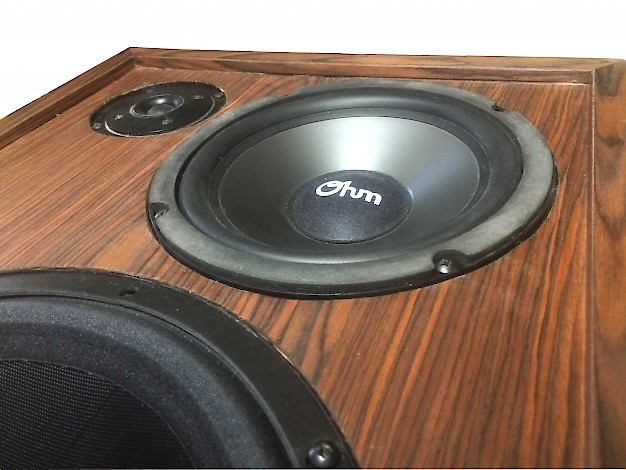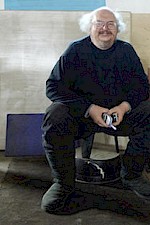Best Bookshelf Speakers of the Golden Age
You can enjoy a vintage system that sounds better than a modern system and costs less. The best bookshelf speakers from the Golden Age of Audio (late 1960’s through early 1980’s) were designed to reproduce LPs. They sound much better than today’s tiny speakers designed to play mp3s.
In the 1950’s, speakers were the size of refrigerators. The Bozak Concert Grand, the Klipsch corner horn, EV Patrician and JBL Paragon were the top of the group. The tube power amplifiers of the time were very low powered and expensive. Even a monophonic system was big and still did not have what we would consider today to be deep bass. Stereo was just being introduced.
Deep bass from a small box became available when Edgar Villchur and Henry Kloss started Acoustic Research (AR) to commercialize the then-new acoustic suspension design where the air in a small box became part of the suspension of a woofer designed to move very far when producing bass. This required more amplifier power, but companies like Dynaco, H H Scott, Fisher and Harmon-Kardon were making 35 watt/channel integrated stereo amplifiers that cost less than the old mono tube power amps. And, the Japanese invasion was just around the corner.
Ohm was founded to commercialize Linclon Walsh’s patented design with the Ohm A. To support this development, Marty Gersten (Ohm president and chief designer) introduced a series of bookshelf speakers. The AR-3a was the recognized standard for acoustic suspension designs and Marty used its size, bass response, and sensitivity for the Ohm B while making the treble more extended with the new Philips dome tweeter. While the AR’s had a concert hall treble roll-off, the Ohm B was more clinical in the treble.

Smaller models (Ohm C, Ohm D and Ohm E) filled out a complete good-better-best line up. These were all two-way systems with the more expensive Ohm B and Ohm C using the Philips dome tweeter and the Ohm D and Ohm E using the new, cheaper CTS (of Puduca, KY) tweeters. When a small amplifier is over-driven (called clipping) lots of distortion in added to the treble, which is the leading cause of failure in tweeters. It only took a few returns for Marty to realize that the Philips was too delicate to work on its own, so the CTS tweeter was soon added to the Ohm B and Ohm C to become the Ohm B+ and Ohm C+.
I was at Tech Hifi at this time and we sold many ARs and Ohms. To get even lower price points, Tech had a private label brand TDC (Transducer Development Corp) and Ohm made one model. This model was similar to the world’s most popular speaker of the time, the AR-4x: it was a two-way acoustic suspension system with the bass of the AR-4x and the treble from the new Philips dome tweeter.
ElectroVoice introduced their Interface Alpha 1 and demonstrated the real benefits of using A N Theil’s analysis of woofers in optimally vented enclosures: deeper bass, smaller box and/or higher sensitivity. I wanted this in the TDCs and tested all the parts we used in our various models. Most required very big boxes; but the 8” would be about right for an AR-3a cabinet. So, I cut a hole in a B+ and replaced the low tweeter with the 8” woofer. I disconnected the 12” woofer turning it into a passive radiator. I could easily add mass to the passive radiator to achieve the correct tuning. It worked! I got deeper bass than the AR-3a and the rest of the frequency range sounded like the TDC. I asked Marty to refine the design for a top-of-the-line TDC. But it took so much money and time to refine the system that he brought it out as the Ohm H, Ohm’s first optimally vented design. It replaced the B+ as Ohm’s top-of-the-line.

When you can find Ohm Hs on the used market, they give extraordinary sound quality for the money. They have surprisingly deep (but never overbearing) bass, and the same natural reproduction of voices that has always made Ohm a favorite. The high tweeter has wide dispersion, so once you have the speakers placed properly in your listening room, you’ll achieve the same frequency balance across a wide area – more than, say, the Ohm L or the Ohm D2, which were both very popular at the same time as the H was. We often have factory upgraded ones in stock in our Outlet Store.
If you pick up a used pair, and the previous owner didn’t keep them up, you’ll probably notice that the surrounds on the 8” woofer and the 12” passive radiator are rotted out. Even if they look intact, all you have to do is touch them and your finger will go right through them! We service all the parts for the H, if you just send them to our factory to have them redone. Unlike local repair shops, we actually replace all the moving parts, not just the surrounds. At the same time, we add liquid cooling to the voice coil and install our SubBass Activator, which gets you even deeper bass, and cuts the drive below the tuning frequency where your woofer doesn’t make sound but can damage itself by trying.
If you’re interested in learning more about restoring old Ohm bookshelf speakers, you can start by reading this article. If you still want to know more, you can contact us and ask questions.
A couple of interesting footnotes:
- The acoustic suspension TDC woofer used an AlNiCo magnet like the Ohm A. When he was developing the H, Marty learned the magnet could lose its energy on deep bass transients because the voice coil was so long it wrapped around the magnet. So, all Ohm’s optimally vented systems required woofers with giant ceramic magnets. We even had to build them with extra strength frames to hold them.
- We were having the woofers custom manufactured by CTS of Puduca, KY. When Marty wanted to change to a ceramic system, CTS said they were not accepting new design projects because they were moving the factory to Mexico to save money. So Marty went to Becker, a car speaker manufacturer in upstate NY. Then, Becker had a fire and was out of production for a year. Since Ohm had been able make the Ohm A from scratch, Marty knew that he could set up a woofer factory from scratch. In our peak, we were able to make one woofer per minute. This gave us a great advantage over companies that use suppliers like CTS and Becker.
Enjoy & Good Listening!
John
Subscribe to Ohm News & Views to get the latest posts in your inbox
John Strohbeen Author
John Strohbeen was the founder and president of Ohm Speaker.


